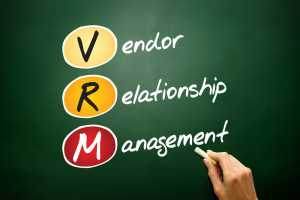An EHR implementation involves more than just the EHR vendor. As we approach the November 1st Epic go live at the University of Vermont Health Network, the interfaces and interdependencies with other  vendors become more critical. As we review issues and risks that need executive level attention, multiple vendors are involved. Whether it’s ensuring their system implementation and interfaces are ready on or in advance of November 1st, or it’s a product that we already use that just needs to work in a new environment, we are counting on them to share our sense of urgency and deliver as expected.
vendors become more critical. As we review issues and risks that need executive level attention, multiple vendors are involved. Whether it’s ensuring their system implementation and interfaces are ready on or in advance of November 1st, or it’s a product that we already use that just needs to work in a new environment, we are counting on them to share our sense of urgency and deliver as expected.
As I assist with some of these vendor relationships and escalations, I’m drawing on many years of experience with IT vendors – both software and infrastructure. We are fortunate to have a strong supply chain management team that partners with IT. They are involved from early on in vendor evaluations through contracting. They stay connected to IT and step in to lead or assist when we have vendor issues after implementation.
Two of my previous blog posts provide guidance on creating win-win relationships with vendors. In “Keys to successful vendor management” I outlined some key success factors:
- A good product roadmap: It should be clear what core solutions are available now and what their path forward is for the next several years.
- More service than sales – a strong service culture should be evident in the sales cycle and demonstrated throughout the duration of the relationship. A focus on service should be engrained in every one of their employees.
- Total Cost of Ownership (TCO) – you and the vendor should develop this together. It should include initial one-time fees, ongoing costs for their products and services, all required 3rd party products, and your internal staff. There should be no hidden costs or “gotchas” later.
- Reputation – be sure to do your in-depth reference checks. Colleagues in similar organizations are a great source of honest, candid information and experience – good and bad. If your vendor is going to host or manage the application/service for you, check on the change management and operational maturity with colleagues and references. Resources like KLAS, Gartner and others can be leveraged as needed.
- Solid contract – once it is negotiated and signed, you may never have to look at it again. But if you do, ensure you are protected. There is growing market consolidation among larger vendors; start-ups are often acquired by larger firms. Ensure you are protected under these scenarios. Ideally you have someone in your Legal or IT department who focuses on technology contracts and knows the common issues and standard terms.
- Implementation – your vendor should provide onsite resources that are integrated with your internal team. Issues tracking and resolution is a joint effort. Status reporting should be a shared effort with a very objective, accurate view. It should include an executive dashboard on status, milestones, issues and budget.
- Escalation – problems will inevitably occur. Escalation process should be clear from the start with a point person for both the vendor and your organization.








